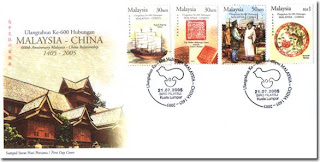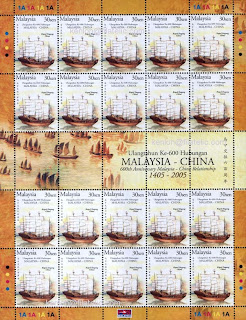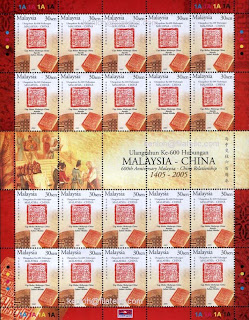 Malaysia's civets, otters, weasels, martens and porcupines may not be as well-known as other Malaysian mammals such as the elephant, tiger or tapir with which they share our forests. They are, nonetheless, interesting and often unusual animals, ranging from treetop to aquatic acrobats, from stealthy nocturnal hunters to peaceful vegetarians.
Malaysia's civets, otters, weasels, martens and porcupines may not be as well-known as other Malaysian mammals such as the elephant, tiger or tapir with which they share our forests. They are, nonetheless, interesting and often unusual animals, ranging from treetop to aquatic acrobats, from stealthy nocturnal hunters to peaceful vegetarians.The Yellow-Throated Marten (Martes flavigula) ranks among Malaysia's most elegant and graceful mammals. The Malaysian variant has a brown belly and flanks, while the chest and throat are a striking creamy-white to canary
 yellow. Its diet includes insects, birds (and their eggs), lizards and amphibians.
yellow. Its diet includes insects, birds (and their eggs), lizards and amphibians.The Large Spotted Civet (Viverra megaspila, Blyth) is believed to forage entirely on the ground as it has never been observed on trees. It eats small mammals, eggs and some vegetation. It is a solitary animal and tends to be aggressive towards members of its own species. Large Spotted Civets are found in lowland forests throughout Malaysia and are best spotted at night as they spend the day sleeping in thick vegetation.
The Malay Weasel (Mustela nudipes) is known locally as 'pulasan tanah'. This species can be found in both Peninsular Malaysia and Borneo, although it is never present in large numbers. Although small physically, it is, like most weasels, a fearless predator which tackles birds, mice and frogs. It gives birth to 1-4 young ones.
 Malaysia's freshwater and coastal areas, especially mangroves and peat swamp forests, are home to the Hairy-Nosed Otter (Lutra sumatrana, Gray). It feeds on crustaceans and fish, being an excellent swimmer with fully webbed feet. It is rarely encountered, but has been recorded in Penang's waters; there may also be a population in Kuala Gula, Perak. It has been observed that the male likes to take part in the rearing of the young.
Malaysia's freshwater and coastal areas, especially mangroves and peat swamp forests, are home to the Hairy-Nosed Otter (Lutra sumatrana, Gray). It feeds on crustaceans and fish, being an excellent swimmer with fully webbed feet. It is rarely encountered, but has been recorded in Penang's waters; there may also be a population in Kuala Gula, Perak. It has been observed that the male likes to take part in the rearing of the young. The Long-Tailed Porcupine (Trichys lipura) is the smallest of the four Malaysian porcupine species and can be mistaken at a glance for an oversized rat - until one notices the large tuft of stiff hairs at the end of its long tail. The Large Porcupine (Hystrix brachyura) on the other hand is a large species, growing up to 7 kg in weight. Porcupines are largely nocturnal animals and are peaceful unless provoked by a predator into using their sharp quills in self-defense. Both of these porcupines can be found throughout Peninsular Malaysia, Sabah and Sarawak.
The Long-Tailed Porcupine (Trichys lipura) is the smallest of the four Malaysian porcupine species and can be mistaken at a glance for an oversized rat - until one notices the large tuft of stiff hairs at the end of its long tail. The Large Porcupine (Hystrix brachyura) on the other hand is a large species, growing up to 7 kg in weight. Porcupines are largely nocturnal animals and are peaceful unless provoked by a predator into using their sharp quills in self-defense. Both of these porcupines can be found throughout Peninsular Malaysia, Sabah and Sarawak. While some of these animals, such as the large Spotted Civet, may still be relatively common, few are privileged enough to see others, like the Hairy-Nosed Otter or Yellow-Throated Marten, in the wild. These mammal species are all protected by law, in order to conserve a truly worthwhile part of Malaysia's natural heritage. Long may they endure.
While some of these animals, such as the large Spotted Civet, may still be relatively common, few are privileged enough to see others, like the Hairy-Nosed Otter or Yellow-Throated Marten, in the wild. These mammal species are all protected by law, in order to conserve a truly worthwhile part of Malaysia's natural heritage. Long may they endure. Technical Details
Technical DetailsDate of Issue : 27-Jul-2005
Stamp Value : 30 Sen (2 designs); 50 Sen; RM 1.00
Stamp Size : 30mm x 40mm
Sheet Content : 20 Stamps
Miniature Sheet Denomination : RM2.00
Miniature Sheet Size : 100mm X 70mm
Stamp Size in Miniature Sheet : 30mm X 40mm
Perforation : 14
Paper : SPM Watermarked, Phosphor Coated
 Printing Process : Lithography
Printing Process : LithographyPrinter : Percetakan Keselamatan Nasional Sdn. Bhd.
Designer : Reign Associates Sdn. Bhd.
First Day Cover Value : 30 sen
Presentation Pack Value : RM 4.00
Folder Value : RM 5.00
 This year marks the 600th year of Admiral Zheng He's first expedition to Malacca. Up till today, Malaysia regards China as a major trading and business partner and bilateral economic cooperation remains the cornerstone of Malaysia - China policy. Evidence of early trade can be found in the form of tin coins used extensively by merchants. Later, imports and exports of Islamic ceramics and Nyonya ware in the 16th and 18th centuries respectively revealed that the connection between the countries had gone beyond economic and diplomatic relations - it has encroached into our custom and way of life.
This year marks the 600th year of Admiral Zheng He's first expedition to Malacca. Up till today, Malaysia regards China as a major trading and business partner and bilateral economic cooperation remains the cornerstone of Malaysia - China policy. Evidence of early trade can be found in the form of tin coins used extensively by merchants. Later, imports and exports of Islamic ceramics and Nyonya ware in the 16th and 18th centuries respectively revealed that the connection between the countries had gone beyond economic and diplomatic relations - it has encroached into our custom and way of life.













